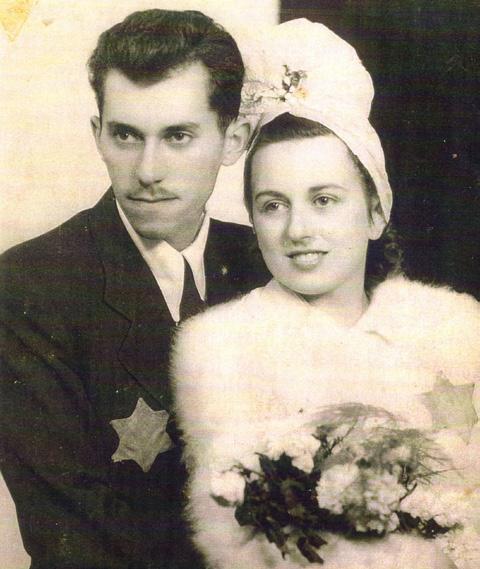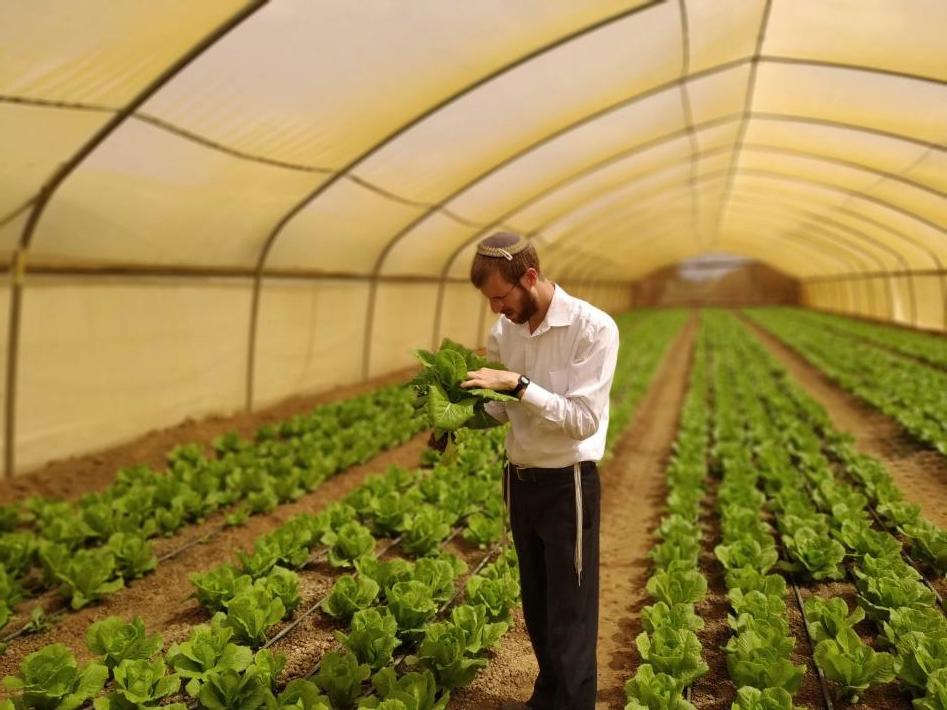
9 minute read
White Wine for the Seder Rabbi Daniel Mann
FROM THE VIRTUAL DESK OF THE OU VEBBE REBBE
RAV DANIEL MANN
White Wine for the Seder
Question: Is it permissible to use white wine for the arba kosot (four cups at the Seder)?
Answer: We dealt previously (Living the Halachic Process, II:C-7) with the question of white wine for Kiddush, which is pertinent because poskim generally equate between the requirements of the two (compare Orach Chayim 272 and 472). The gemara (Bava Batra 97a-b) posits that wine that is unfit for libations even b’di’eved may not be used for Kiddush, but that which is nominally fit can be used for Kiddush. The gemara cites a pasuk (Mishlei 23:31) that wine is expected to be red. According to most Rishonim, this was not meant to disqualify white wine for Kiddush, but the Ramban (ad loc.) understands that white wine without any red-leaning tint is unfit even for Kiddush. The Shulchan Aruch (OC 272:4) cites both opinions but sides with the lenient one. The Mishna Berura (272:12) adds that regarding very white wine (many assume this is now rare) one should defer to the Ramban’s concern unless there are extenuating circumstances, including that the available red wine is of poor quality.
Regarding the arba kosot, the Shulchan Aruch (OC 472:11) paraphrases the Yerushalmi (Pesachim 10:1) that one should prefer red wine. The Rama (ad loc.) excludes cases in which the white wine is of higher quality. The Ramban’s opinion is not mentioned, even though arba kosot should not be less demanding than Kiddush (and the first cup is for Kiddush), likely because the Ramban was already mentioned and basically rejected. There seems to be, then, an additional preference.
The Taz (ad loc. 9) and Magen Avraham (ad loc. 13) are among those who say we desire that the color red serve as a remembrance of the blood of the Pesach story. The Taz says that it reminds us of the Jewish blood spilled by Paroh. Chazon Ovadia (Haggada, Kadesh (10)) finds that strange, considering that drinking the wine (during which we lean) is a festive action, and so he prefers those who say that it relates to the blood of the Korban Pesach, of mila, and/or of the first plague.
Both the language and the logic point to the remembrance constituting only a preference. On the other hand, those who are lenient regarding “white” wine that is
The Orthodox Union - via its website - fields questions of all types in areas of kashrut, Jewish law and values. Some of them are answered by Eretz Hemdah, the Institute for Advanced Jewish Studies, Jerusalem, headed by Rav Yosef Carmel and Rav Moshe Ehrenreich, founded by HaRav Shaul Yisraeli zt”l, to prepare rabbanim and dayanim to serve the National Religious community in Israel and abroad. Ask the Rabbi is a joint venture of the OU, Yerushalayim Network, Eretz Hemdah... and OU Israel’s Torah Tidbits.
not fully white for Kiddush likely should still prefer something that is actually in the red family as a proper remembrance. That is because while the potential Kiddush problem is likely because such an abnormal wine color is treated as deficient (see Tashbetz I:85), even the finest wine may not remind us of blood. Ultimately, the Rama says that the opportunity to use a finer white wine justifies preferring it to a simpler red wine. Rav Ovadia Yosef (Chazon Ovadia ibid. 12) says that Sephardi practice (not all Sephardi poskim agree – see Mikraei Kodesh (Harari), Leil Haseder 4:15) is to defer to the Ramban’s opinion unless the white wine is both better and not too white.
Several Acharonim suggest to “upgrade” white wine by mixing in a little red wine, so that the mixture has some redness. This makes good sense if the issue is the remembrance (see opinions cited by Piskei Teshuvot 472:10), as one can see some redness (while blood is redder, red wine does not really look like blood either). Surprisingly, the Shemirat Shabbat K’hilchata (47:(89)) suggests mixing a little red for Kiddush during the year. Ostensibly, if the Ramban is right, then the white wine is invalid wine, and why would a little red (i.e., kosher) wine help?! Apparently the Shemirat Shabbat K’hilchata views the color not just as a sign of proper wine but that the color provided by the wine combination is a necessary characteristic of the wine use, as can be read into the gemara in Pesachim (108b).

Since we hold that there is no prohibition of coloring with foods, putting red wine into white wine is permitted (Mishna Berura 320:56). Yet, due to the opinion that it is forbidden if one intends for the color (Nishmat Adam II:24:3), the stringent can put in the red wine first and “dilute” the color with the majority white wine (Shevet Halevi X:56).
Eretz Hemdah has begun a participatory Zoom class - "Behind the Scenes with the Vebbe Rebbe" - an analytical look at the sources, methodology, and considerations behind our rulings, with Rav Daniel Mann. Contact info@eretzhemdah.org to join.
Having a dispute?
For a Din Torah in English or Hebrew contact ‘Eretz Hemdah - Gazit’ Rabbinical Court: 077215-8-215 • fax: (02) 537-9626 beitdin@eretzhemdah.org
RABBI GIDEON Machon Puah for Fertility and Gynecology in Accordance with Halacha WEITZMAN
A Wedding in the Ghetto
Areader shared with me their story and I would like to share it with all our readers, especially as we celebrate Pesach.
Over the past few weeks, in our discussions regarding the Covid 19 pandemic, we have mentioned that the Jewish people have always embraced life. Even when this seems to be nonsensical and against any human logic, Jews continued to get married and have children.
Dr. George Lebovitz wrote to me the following.
“Your column resonated within me strongly. “A wedding is a statement
of belief, of hope for the future, in the desire for children and the next
generation.” My parents were married in the Budapest ghetto in august 1944. They told me that many people said they were crazy to get married. But they didn’t listen to the naysayers. Their wedding was in an apartment in Budapest with a minyan. My mother did not have a wedding dress. The wedding feast consisted of a shot of shnapps and a cookie. They have passed away but lived to see great-great grandchildren. I have attached their wedding picture.

My own granddaughter was married before Shavuot with a limit of 50 people as you described as they did not want to
To all of our devoted friends and donors who contributed MAOS CHITIM and helped over 200 poor and needy families enjoy the Holiday of Pesach - Best wishes for a Chag Kasher V’sameach, and a healthy spring and summer. Send your contributions to the Clara Hammer Chicken Fund P.O.B.18602 Jerusalem 91185 (02)5810256 Donate via PayPal at Chickenladyofjerusalem.com
חמש גח !אירב ץיקו
postpone even though the groom’s family could not attend from the US. As you stated, this is a source of pride for us.”
I would like to thank Dr. Leibovitz for sharing his story with me. I was moved and shared it with several people who were also moved and inspired by this letter.
I do not know Dr. Leibovitz, nor do I know his parents, but I can only imagine how they felt in those bleak days during the Second World War and the Holocaust. The world around them was destroyed and desolate, only a blind or mad person would continue with life as normal. From where did they find the audacity to get married as death threatened them? The source of their tenacity was the faith in God bringing a better world, a belief in the immanence of the Divine salvation.
If they had listened to commonsense, they would not have married, Dr. Leibovitz would not have been born, neither would his children and his granddaughter would not have married a few months ago.
When we tell the story of leaving Egypt to our children and families, we must remember that we are links in the chain of Jewish history that stretches from Egypt to our homes today.
Pesach Sameach
The Puah Institute is based in Jerusalem and helps couples from all over the world who are experiencing fertility problems. Offices in Jerusalem, New York, Los Angeles & Paris. Contact (Isr) 02-651-5050 (US) 718-336-0603 www.puahonline.org
Meir Golan
www.golan-realestate.net
Old Katamon: Charming 4-room apartment, Meir Golan architecturally renovated, Sukkah balcony, green open view, 3,090,000nisOld Katamon: 4-room apartment in a small and quiet street, 101 Old Katamon: 4-room apartment, 101m, sqm, renovated, very bright and airy, master bedroom, Safe room renovated, master bedroom, Safe room, sukkah (mamad), sukkah balcony, view, elevator, 3,400,000 NIS balcony, view, elevator, 3,400,000nis Kiryat Shmuel: 4-room apartment, 95m, Old Katamon: 4-room apartment, 90 sqm, well split, bright, airy, sukkah balcony, rare panoramic view, Shabbat sukkah balcony facing a magnificent panoramic view, 3 exp. Shabbat elevator, private parking, 3,290,000nis elevator, parking, 3,290,000 NIS Rechavia: 5-room apartment, 135m, balconies, 4 exposures, elevator, small and quiet building 4,950,000nis Rasko: various new apartments 2/3/4/5 rooms Old Katamon: Spacious 3-room apartment in a very quiet street, sqm, sukkah balcony facing a green and pastoral view, 3 exp. Shabbat elevator, private parking, storeroom, 2,690,000 NIS 75 in new Tama 38 project, high specifications, parking, elevator
Baka: 3-room apartment, completely renovated, elevator, parking, balcony to a nice green park, 1,850,000nis
Givat Mordechai: 3 & 4-room apartments, renovated, bright, elevator, parking, warehouse 1,690,000/2,250,000nis

TORAH VEHA'ARETZ
INSTITUTE BY RABBI MOSHE BLOOM
en.toraland.org.il
Bitter Lettuce for Maror
Q: Does the lettuce for Maror need to be bitter? A: Chazal tell us that we can only observe the mitzva of eating maror on five specific types of vegetables mentioned by the Mishna (Pesachim 2:1), which are: "chazeret (=lettuce), olashin, tamcha, charchavina, and maror.” (for a precise identification of these vegetables, see the booklet Merorim by Prof. Zohar Amar). There is a preference for lettuce, even if it is more expensive, for several reasons: (1) the main mitzva is to eat chazaret since it is the first type listed by the Mishna (2) the way it grows is similar to the Egyptian enslavement process, soft in the beginning and hard and bitter at the end (Pesachim 39b, Shulchan Aruch OC §473:5, Mishna Berura, ibid.).
Lettuce is usually picked after 25-55 days in the ground. If you wait till 70-75 days, it
TRANSFER YOUR OLD FILM/VIDEO's
(All formats) In Quality to Digital
Preserve Family History from Fading Michael 052.286.8626
Photography with feeling Facebook.com/L'Dorot Photography
becomes bitter.
Some poskim (Ridbaz, Mishmeret Shalom, Chazon Ish, Rav Kanievski) write that one should eat the lettuce only when it is bitter (but not too bitter that one can’t eat a kezit of it). However, most poskim do not require it to be bitter. The mitzvah is to eat one of the vegetables mentioned called maror, and lettuce is preferable for the reasons mentioned above (Peri Chadash, §473:5; Sulchan Aruch HaRav §473:30; Mishnei Halachot 7,68).
In the past, Chasalt company would make sure to leave in the ground some insect free lettuce, and to give it important Rabbis (like rav Kanievski). This practice has stoped years ago.
In conclusion, there is no need to eat the lettuce when it is bitter.

Chasalt Insect free nethouses. Next to Meitar, north of Be’er Sheva.







